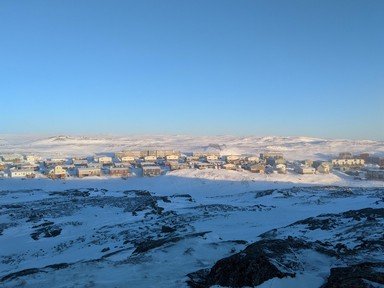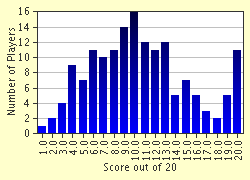Quiz Answer Key and Fun Facts
1. According to the Northwest Territories Bureau of Statistics in 2000, what was the approximate population of the Northwest Territories?
2. Which of the following is not found on the Northwest Territories Coat of Arms?
3. Which of the territories was the first to be admitted into confederation?
4. The largest island in Canada is located in which of Canada's territories?
5. The ____________ Highway runs from Dawson Creek, British Columbia to Fairbanks, Alaska, while the ____________ Highway runs from the Klondike Highway to Inuvik, Northwest Territories.
6. Which of the following roads is the last road in Canada having a road sign with an imperial measurement on it?
7. On September 18, 1992, nine replacement workers were killed by an explosion at the height of a labour dispute. Who was later convicted of placing a bomb in the mine shaft and murdering those nine miners?
8. What native group was employed to carry radioactive uranium ore during the 1940s and have subsequently become victim to high rates of cancer?
9. What park, located in the extreme southwestern portion of the Yukon Territory, is primarily dominated by mountains and glaciers?
10. Mount Logan, Canada's highest point (5959 m) is located in what territory?
11. Which city was the capital of the Yukon until 1952?
12. According to the Northwest Territories Official Languages Act, how many official languages are recognized in the Northwest Territories?
13. Which of the following is not a community in the territory of Nunavut?
14. In Canada, there is only one location where the boundaries of four provinces/territories intersect. What is this intersection known as?
15. The system of radar stations in the far Arctic region of Canada as a means to detect Soviet bombers and missiles during and following WWII was known as what?
16. What is the parallel of latitude that runs at 66 degrees 33' 38" N called?
17. What railroad located in the Yukon has an isolated system (meaning it has no connection to any other railway)?
18. In 1987, what major figure made a trip to Fort Simpson, Northwest Territories, after being prevented from doing so three years earlier?
19. What was Iqaluit, Nunavut, formerly known as?
20. What settlement is located at 82 degrees 28'N, 62 degrees 30'W?
Source: Author
apathy100
This quiz was reviewed by FunTrivia editor
minch before going online.
Any errors found in FunTrivia content are routinely corrected through our feedback system.

